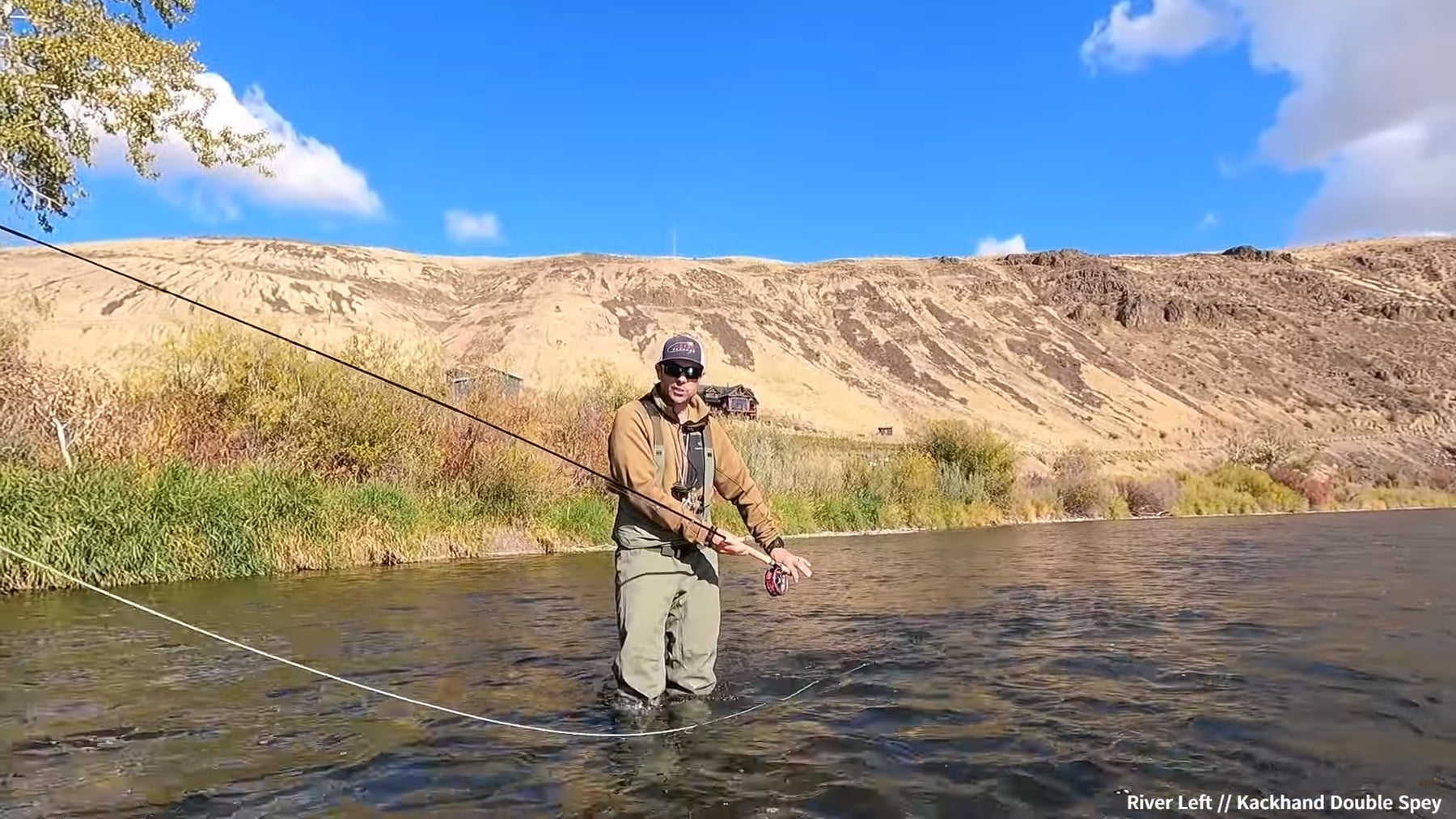CALL NOW (509) 933-2300
CALL NOW (509) 933-2300

Many anglers got the gear, got motivated, but that perfect casts is phantom. It's there one minute... then you're a total wreck with a fly stuck in your back the next. Been there. You can become a VERY good caster by simply understanding Skagit style casting. Knowing the formula and WHY we use different casts is the first step toward making effortless two-handed casts with light tackle.
My Setup Used in the Video
I have taught hundreds of anglers to cast light spey gear, and have seem the same problems come up again and again. I could start by pointing out all the common mistakes like "blowing your anchor", "cutting the corner", "rise and drop rod tip movment during the D Loop", and more of the mistakes. I have found it MUCH easier if anglers understand the cast, the parts, and simply build a recipe for the cast. Watch the video below, in fact, get the bottom section of your rod out and follow along.
Step 1. Anchor. The cornerstone of the entire Skagit cast. This is step one, and is a strategic repositioning of the line so that your line, rod, and body is poised for step 2.
Step 2. Form the D Loop. Without, there is no cast. The "D Loop" is essentially your backcast in spey talk. The D Loop is explained in the video, and can only be created properly if you execute Step 1. Very important.
Step 3. The Powerstroke. This is the final step, and in my opinion, the easiest if you completed the first two steps properly.
WHY is this so important?
Because you'll need a plan. Each cast is setup with... anchor, D-loop, stroke. In that order. Get the recipe down pat, follow it every time.
There are (2) casts that you'll need to know for successful trout spey fishing. You'll need to learn how to execute these on both sides of the river. One version off your right shoulder, one version off your left shoulder. The fly should always be cast off of your downwind side to avoid hooking yourself, tangles, and general inefficiency. The reference "river left" will be as you are looking downstream, "river right" on the right bank if you are looking downstream. A dominant shoulder cast for a right hander is your right side, kackhanded will be on your non-dominate side. Well explained in the video.k
Watching the Video Demos the cast, but seeing it in writing will help you remember.
1. Double Spey - River Left. (left shoulder kackhand for right hand caster)
2. Snap T - River Left (right shoulder cast)
3. Double Spey - River Right (right shoulder cast)
4. Snap T - River Left (left shoulder kackhand for right hand caster)
I firmly believe that if you have a "plan" and understand which cast to use, and the 3-step recipe for each cast you'll be successful.
Choose your cast based on the side of the river you are on, and the need for a "left shoulder" vs. "right shoulder". Wind and obstacles in your D Loop will determine this.
After you choose the cast you are planning to execute, use the 3 step process of... Anchor, D Loop, Stroke in order to build a foundation. Follow these steps, don't cut corners, and think it through.
Use an unweighted fly and a slow sinking tip in order to make your introductory trip easy. Concentrate on reasonable length casts, attempting to shoot no more than (1) rod length of line. Always remember to strip up your running line and position the connection to the shooting head just outside the rod tip.
Don't worry about the catching right away. Learn your cast, get to know your gear, and the "catching will take care of itself". Trout spey is great for DIY wade fishers and the simple approach, easy gear set, and fun casting will give you hours of enjoyment!